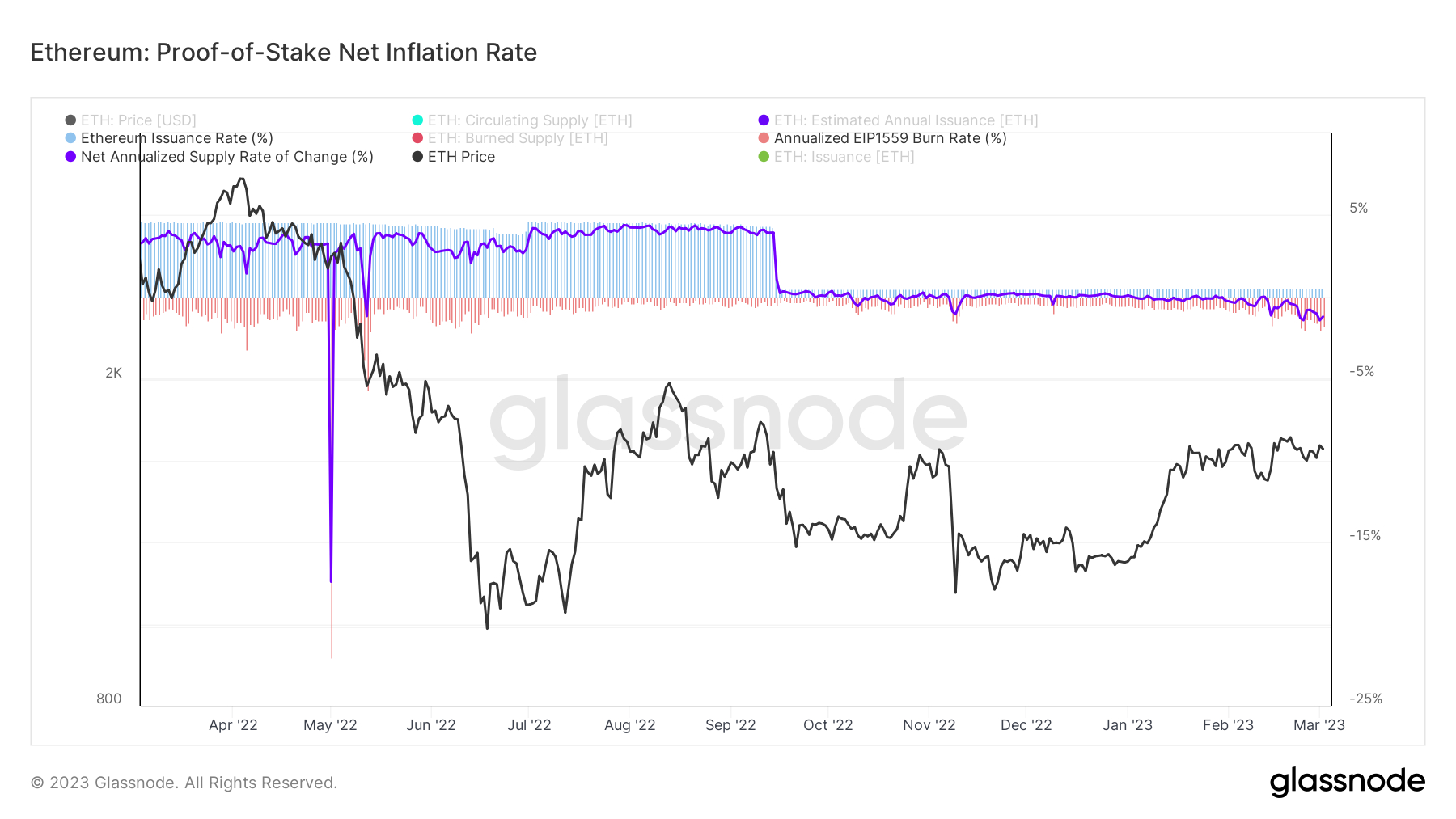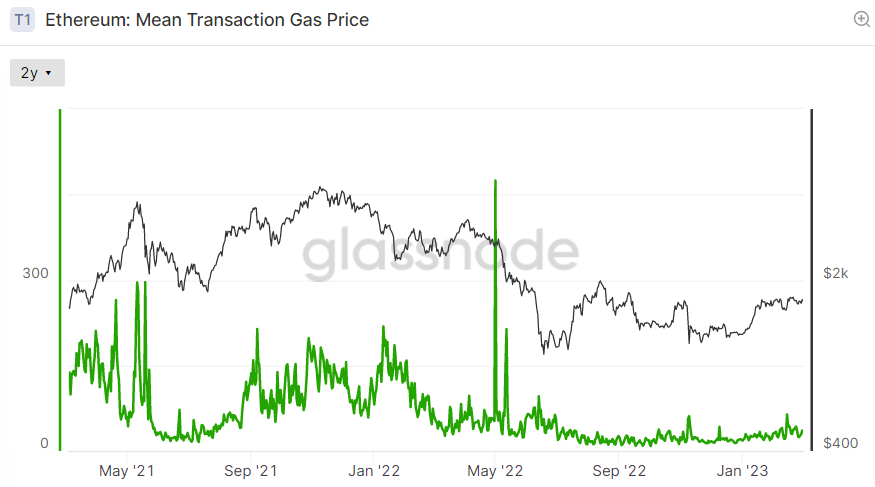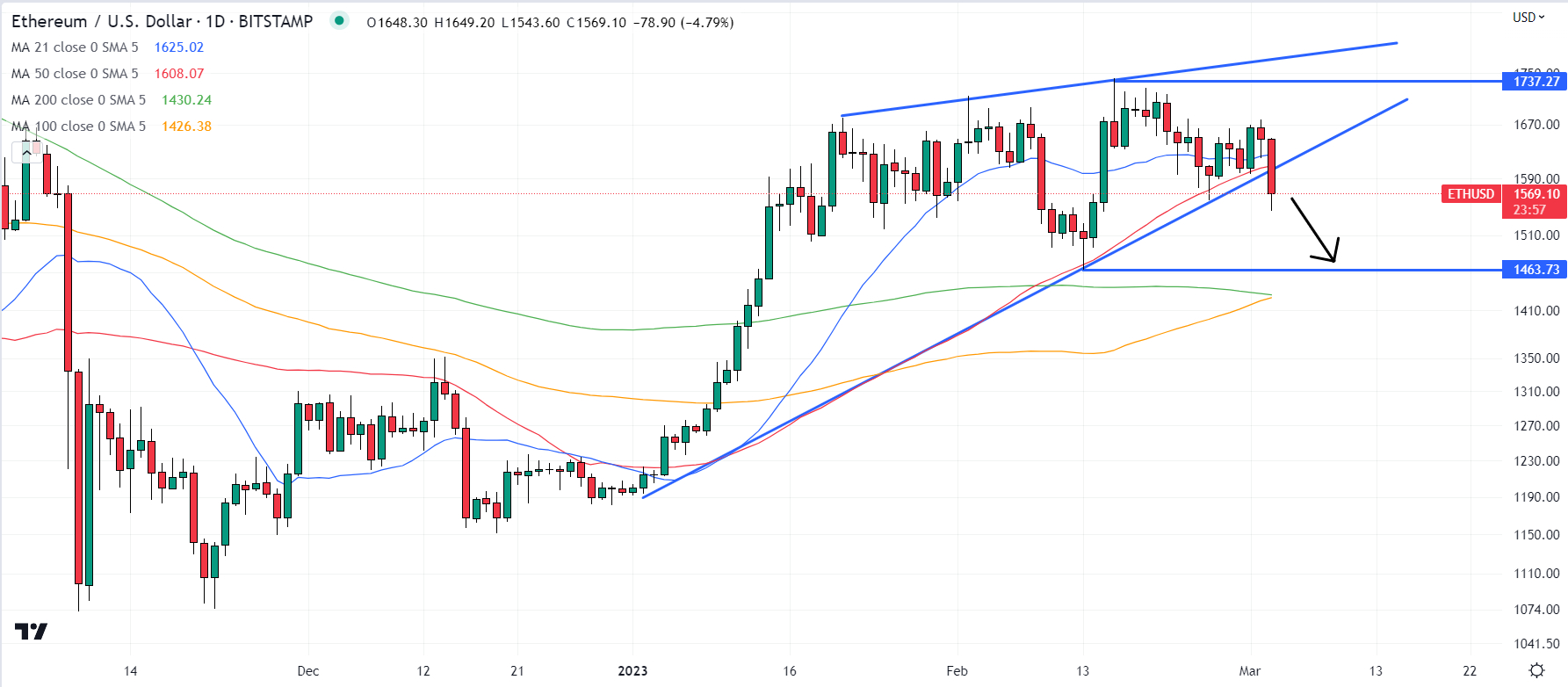Ethereum’s Deflation Rate Hits New Yearly Highs – Here’s Where the ETH Price is Headed Next

The rate at which the Ether supply is deflating recently reached its highest level of the year. On Wednesday, the Annualized EIP-1559 Burn Rate surpassed the ETH Issuance Rate by 1.425%, the most since a quirk last May where the deflation rate rose above 17% for just one day.

When the deflation rate increases, that means that individual ETH tokens are becoming scarcer at a faster rate. Most analysts think this ought to boost the cryptocurrency’s price in the long run.
ETH/USD’s near-5.0% drop on Friday, as crypto markets take a knock on concerns about crypto bank Silvergate and reports that Tether committed fraud to maintain access to the global banking system, suggests traders aren’t paying much attention to recent developments in the ETH deflation rate.
Indeed, currently changing hands around $1,570, ETH/USD is now around 10% down versus its recent highs in the mid-$1,700s. While ETH may be down since the start of February, its deflation rate certainly isn’t. Indeed, it seems to be trending higher.
Traders should keep deflation in mind as a potential talking point/narrative that could boost ETH later this year. Other themes that might also boost like Ethereum network upgrades, including the launch of staked ETH withdrawals next month, a potential DeFi resurgence and a potential improvement in the macro backdrop, if a US recession can be avoided and falling inflation gives the US Federal Reserve room to cut rates.
Explainer – What is Driving Accelerate ETH Deflation?
Before answering the question as to what is driving the increase in the ETH deflation rate, we need to understand why ETH deflation even happens at all and that requires an understanding of how the Ethereum network fee structure works. Network fees are split into two components. The first is a base fee that all users must pay to ensure that their transaction is accepted and processed on the blockchain.
There is then an optional tip that users can pay to have their transaction processed more quickly. The Ethereum network automatically calculates the base fee, which rises at times of heavy network traffic. Ethereum Improvement Proposal (EIP) 1559, which was implemented into the Ethereum code in the London hardfork in August 2021, requires that all of these base fees paid by users are then burned, removing the tokens from circulation permanently.
As a result, when the base gas fee rises, the rate at which Ether is burned also rises. When this burn rate exceeds the ETH Issuance Rate, which is around 0.55%, the ETH supply will decline. ETH is issued to the nodes and stakers that secure the Ethereum network. The below chart shows how Ethereum network (base) gas fees have been gradually rising in recent months.

The ETH Deflation Rate Could Accelerate Further
High network congestion consistently drove the daily annualized ETH (EIP 1559) burn rate as high as 6.0% in early 2022. At the time, the Ethereum blockchain was still powered by the much more energy-intensive proof-of-work consensus mechanism and, as a result of the much higher energy fees and miner rig costs incurred by the miners that powered the network, Ethereum’s issuance rate was much higher at around 4.4-4.6% per year.
That means that Ether’s deflation rate only hit a maximum of around 1.5%. If a resurgence in the broader crypto and DeFi market can send the EIP 1559 burn rate back to its early 2022 highs, the new much lower ETH Issuance Rate means Ether’s deflation rate could hit a staggering 5.5%.
Where Next for the ETH Price?
While ETH deflation might sound all very exciting, bulls might need to be patient as the near-term outlook for the world’s second-largest cryptocurrency by market capitalization looks bumpy. ETH’s latest drop has sent it below an uptrend that had been intact since the start of 2023.
That potentially bodes poorly for Ether’s near-term price outlook, with a test of February lows in the mid-$1,400s potentially on the cards. Of course, the aggressive rally in US stock markets on Friday, if built upon next week, could prevent further downside in crypto markets. Whatever the case, ETH looks likely to continue bouncing around with its February mid-$1,400s to mid-$1,700s range.













